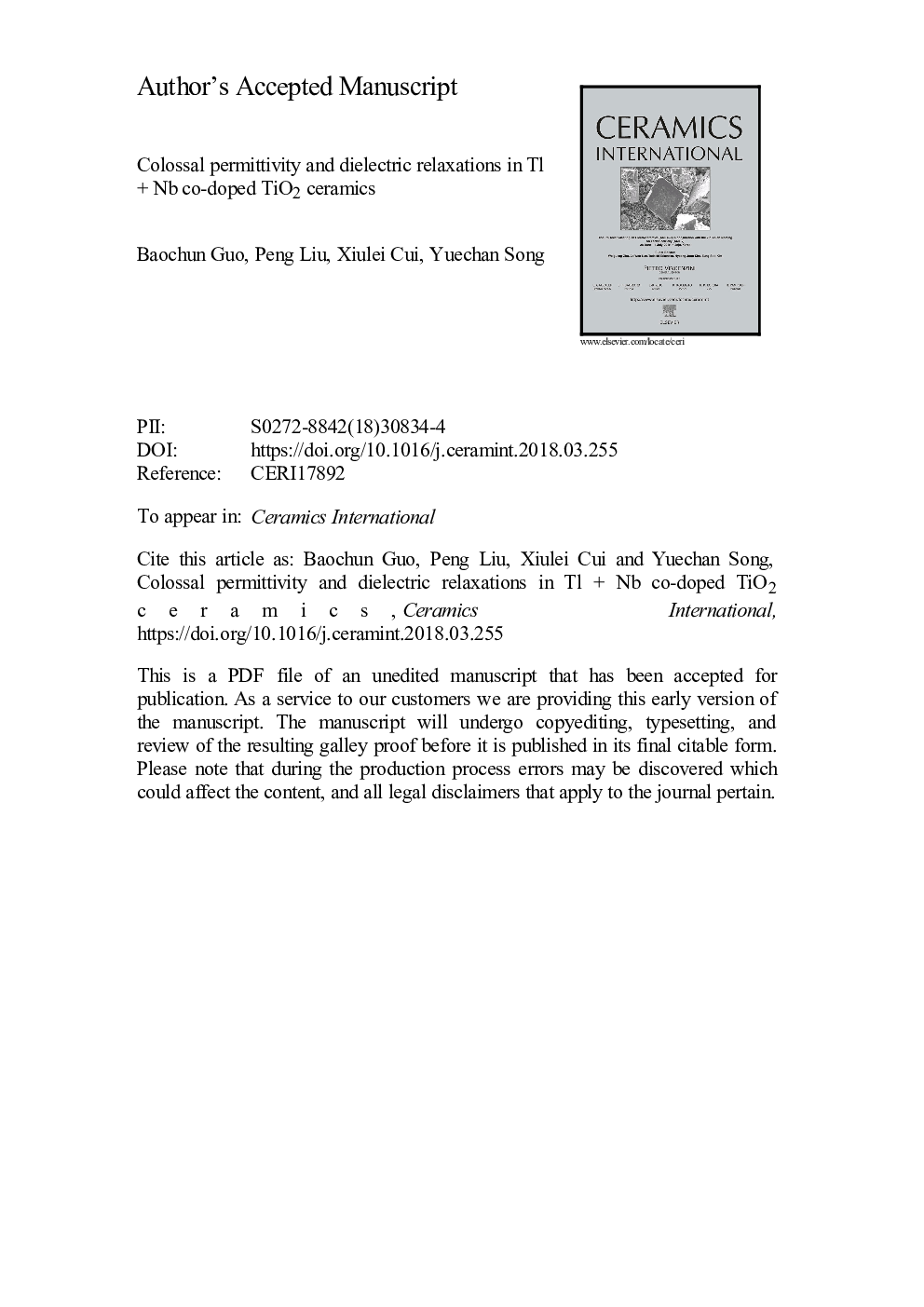| Article ID | Journal | Published Year | Pages | File Type |
|---|---|---|---|---|
| 7886767 | Ceramics International | 2018 | 29 Pages |
Abstract
A series of Tlâ¯+â¯Nb co-doped TiO2 ceramics ((Tl0.5Nb0.5)x%Ti1-x%O2 0.5â¯â¤â¯xâ¯â¤â¯10.0) were prepared by a solid-state reaction method under N2 atmosphere. The evolution of their microstructures, and dielectric properties were systematically studied. The co-doped ceramics exhibited a tetragonal rutile structure wherein the Nb and Tl elements were homogeneously distributed. The cell volumes, grain size, and permittivity increased with doping x, whereas the impedance values of the grain and grain boundary decreased with an increasing x. The optimum dielectric performance (εr >â¯104, tanδâ¯<â¯0.05) in the range of 10-106 Hz was obtained for xâ¯=â¯1.5 with a corresponding grain boundary active energy of 0.86â¯eV. Four types of dielectric relaxation were observed at different temperature ranges: 10-30â¯K, 30-200â¯K, 200-350â¯K and 350-475â¯K; those dielectric relaxtions were respectively caused by electron-pinned defect-dipoles, electron hopping, oxygen vacancy hopping, and Maxwell-Wagner polarization. The colossal permittivity is primarily a result of the electron-pinned defect-dipole polarization.
Related Topics
Physical Sciences and Engineering
Materials Science
Ceramics and Composites
Authors
Baochun Guo, Peng Liu, Xiulei Cui, Yuechan Song,
